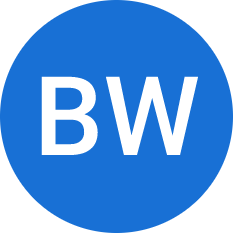Imagine a kitchen where everyone has different recipes for the same dish. The result? A chaotic mess of inconsistent meals.
Now picture the same kitchen with a clear, standardized recipe everyone follows. There’s harmony, efficiency, and a delicious meal every time.
That’s the power of Standard Operating Procedures (SOPs) in business. Without SOPs, organizations face a similar chaos: inconsistent processes, miscommunication, errors, and wasted time.
In this blog, we will discuss how to write an SOP and explore its formats, benefits, challenges, and real-world examples. Let’s go!
What Is a Standard Operating Procedure (SOP)?
A Standard Operating Procedure (SOP) is a detailed, step-by-step document outlining how to perform a specific task or process within an organization. It serves as a blueprint for ensuring consistency, efficiency, and operation quality, minimizing errors, and promoting safety.
SOPs are designed to be unambiguous, providing instructions anyone can follow. They typically include the purpose, roles, required tools, step-by-step process, safety precautions, and quality control measures.
An example of an SOP could be a document detailing the procedure for troubleshooting a standard software error. It would outline the steps to identify the error, gather diagnostic information, attempt various solutions, escalate to a higher tier of support if necessary, and document the resolution for future reference.
Why Are Standard Operating Procedures Important?
What happens when you leave things to chance? You lose control over the outcome.
- Creating Standard Operating Procedures gives you the power to control how your business moves and grows. It systematizes your company processes and helps employees work in complete alignment to achieve your company’s goals
- When employees work cohesively with maximum clarity, they succeed in their roles, which has a positive snowball effect on your overall business growth.
Let’s take Starbucks as an example. It maintains consistency in the quality and taste of the coffee it delivers across its 32,660 stores worldwide. How does this coffee chain giant provide a consistent experience at such a vast scale?
The answer lies in its Standard Operating Procedures (SOPs). The brand’s SOPs have logical instructions for business functions like record keeping, manufacturing, maintenance activities, etc., that are sincerely followed by all its branches.
What Are the Benefits of Implementing Standard Operating Procedures?
You might think that since you are already training employees to do their jobs correctly, you don’t need SOPs. But that’s not true.
These benefits will explain how writing Standard Operating Procedures can turn the tables for your business.
Brings Consistency Across Departments
Consistency plays a huge role in any business’s ability to work smoothly, like a well-oiled machine. With well-written Standard Operating Procedures, teams across departments know what to do and how to work in the best and, most importantly, worst situations.
Every employee, right from an intern to a C-level executive, has the same information at their fingertips. This is how you can guarantee consistent performance at all levels.
Boosts Employee Onboarding & Training
Did you know that a whopping 88% of employees feel their organizations do not onboard well? Many companies face high attrition rates due to poor employee onboarding.
New employees have high expectations from their place of work. These expectations are crushed when they are clueless regarding your work processes and have to bug seniors and colleagues for help constantly.
SOPs come in handy for new employees. These procedures help employees easily navigate daily situations and give their best shot at work. A clearly defined Standard Operating Procedure guides new employees from day one, keeping them prepared for the best and worst times.
Keeps Confusion & Misunderstanding at Bay
Your employees might have in-depth knowledge of the subject, but what causes the mess is their lack of clarity on how your business operates.
SOPs provide employees with a roadmap to follow for the most basic and even the most complex of tasks. They clearly state the “Right” way to get a job done, leaving little to no scope for confusion, misunderstanding, or errors.
Keeps You From Falling into Legal Troubles
What if an employee misses a crucial step while using a piece of equipment and hurts themselves? Situations like these can damage your brand’s hard-earned reputation and create a sense of panic among other workers.
Standard Operating Procedures guard you against such legal troubles. They reflect that your company has done what is needed by providing employees with a safe and healthy work environment. Moreover, detailed SOPs also help you prevent hazardous incidents from happening in the first place.
How to Write an Effective Standard Operating Procedure
Learning how to create an SOP helps to streamline operations, improve efficiency, and ensure consistency within an organization. Here are the steps to create one:
Spend Time on Research
Countless processes run an organization. Does that mean every process should be documented? Not necessarily!
You can identify the critical processes and tasks employees regularly perform and create SOPs to make their work easier. Conduct surveys asking employees about the methods and tasks they take up almost daily. Ask them about which processes are extremely important and need maximum accuracy.
Once you create the list of processes to be documented, consult with department heads for any changes or additions before moving forward with the writing process.
Set Your Goals
Creating SOPs is a laborious process that requires your employees’ time and effort, so get your goals right before taking the plunge. Besides, it would help if you also considered identifying employees’ pain points with specific tasks and processes so you have a clear picture of how exactly the SOPs will help.
Once you have this valuable information, setting goals for your SOP initiatives will be much easier. For example, the goals can be:
- Streamlining the customer support process
- Minimizing errors in a complex internal process
- Maximizing the productivity of specific teams
- Preventing hazardous incidents in the workplace
Getting your goals straight sets a clear path for your team, ensuring they are on the right track from the beginning.
Know Your Audience
Different SOPs have different audiences. Before beginning the writing process, you should have a crystal clear idea of your target end-users.
Keeping the key individuals, their specific needs, and pain points into account is crucial before you start crafting content. To learn about your target audience, ask yourself questions about:
- The size of the team
- The knowledge they hold about the process
- The roadblocks they face while performing the process
This information serves as the fodder for building SOPs that are relevant and helpful for your employees.
Build a Team of Document Creators
SOPs are built for employees, so it makes sense to have their complete involvement in the creation process by creating a team of document creators.
Identify employees with good knowledge of the topic and the bandwidth required to contribute meaningfully to your SOPs. Senior executives bring valuable insights, whereas subordinates can bring fresh ideas that spark innovation in the existing processes.
Identify the people who specialize in the subject and possess excellent writing and editing skills. Put them in charge of the writing process and let others focus on the administrative side. If a writer makes a mistake, the editor can help review the work, and the administrator can manage other activities.
Pick a Suitable Format for Your SOP
The next step is choosing an appropriate SOP format – step-by-step instructions, flowcharts, and checklists.
Remember that every format serves a different purpose. Understand the process you are going to document and the requirements of your target audience, and then choose the most suitable format.
For example, checklists can work great if a process is straightforward and doesn’t need much extra explanation. On the other hand, if a process is complicated and can be performed in multiple ways, leading to different outcomes, consider creating Flowcharts for it.
Start Documenting Your SOPs
Now that you know the basics of SOPs, it’s time to start writing them. As an SOP is a comprehensive document, it’s ideal to begin with an outline and then explore each topic in depth. An SOP’s outline must comprise of a:
- Home page
- The titles of all processes
- A table of contents
- The name of the department you are going to create the SOP for
- Signatures of all stakeholders
- The purpose of the SOP.
To simplify this lengthy process, adopt a standard operating procedure template with a predefined format. Such templates will reduce your work by half. They provide a ready-to-use structure, so all you have to focus on is creating amazing content for your Standard Operating Procedures.
Quality Check the Document
To keep the errors to a bare minimum or, even better, eliminate them all, you need to deploy a strict and transparent review system. Make it mandatory for everyone involved in the documentation process to thoroughly review and cross-check the content before rolling it out for your employees.
Once the writers in your team are done writing, the editors with more experience and knowledge of the process can take up the review work – one article at a time. Since they know the process inside-out, they will be able to identify gaps and inaccuracies and use their expertise to add more value to the written content.
Share SOPs with Your Employees
Employees should be able to access the procedures conveniently on their laptops, tablets, and mobile phones. You can even give employees the option to download the SOPs for future reference or use them in printed form—whatever they prefer.
Share SOPs on a centralized and safe platform, such as an internal knowledge base that employees can access 24×7, anytime, anywhere. This way, they can make the most of your company’s processes in their day-to-day work.
Revisit & Improve Your SOPs
With time, as your company grows and new processes are added, the SOP should reflect these changes to maintain its relevance. For that, you need to look for areas lacking meaningful content regularly and occasionally make the required updates.
As your employees start practicing the SOP, they will have both positive and negative experiences. Tap into these experiences, understand where your SOPs fall short, and make the necessary amendments to turn your SOP document into a highly relevant information hub.
Keeping a close eye on KPIs like article upvotes and downvotes, total searches, and poor-performing articles will help you maintain the quality of your SOPs.
FREE. All Features. FOREVER!
Try our Forever FREE account with all premium features!
What Are Some Popular Standard Operating Procedure Formats?
Before starting the creation process, it’s important to understand which type of SOPs will best suit your unique business needs. Here are some of the main types of Standard Operating Procedures you can create:
Step-By-Step Instructions

Standard Operating Procedures, which are step-by-step instructions, are best for explaining how your business processes work. These are primarily bulleted, demonstrating each step using suitable images and How-to videos.
The step-by-step SOP format is appropriate for straightforward tasks that do not demand in-depth explanations, such as sign-up and log-in instructions, installation and setup process, etc.
Flowcharts

Another format for creating Standard Operating Procedures is flowcharts. Flowcharts are best suited for processes where results are not static. Such processes or tasks can have several outcomes, which is why they are best illustrated using easy-to-follow flowcharts.
Flowcharts present the processes visually and give the complete context of how multiple steps are connected to each other. With steps adequately shown in the flowchart and a clearly defined outcome, employees can quickly identify the best route to achieve the right results.
Internal Knowledge Base
An internal knowledge base is the most effective and accessible platform to document your standard operating procedures. Unlike other mediums, the information is stored in the cloud, so your employees can access it on the go, even on their mobile phones.
With an internal knowledge base, you can give your SOPs a logical structure and explain concepts using images and videos. The best part is that you can involve multiple employees who take charge of building and maintaining the SOPs.
Checklists/To-Do Lists

Checklists or to-do lists are easy to write, read, and understand. This makes it easy for creators and readers to understand the SOPs and put them into practical use. You can create a header for every procedure and develop a checklist of steps to follow or things to remember.
The best SOP manual tools in the market are equipped with modern features that help you create Standard Operating Procedures in a format of your choice. These tools allow you to create an SOP document with articles in multiple formats, such as checklists, flowcharts, how-to videos, and articles.
What Are Some Common Challenges in Developing Standard Operating Procedures?
While SOPs are critical in maintaining consistency and efficiency, their creation and implementation can present the following challenges.
Balancing Detail & Flexibility
SOPs must be detailed enough to provide clear guidance but not so rigid that they stifle innovation or adaptability. Finding this balance can be challenging, especially in dynamic environments where processes may evolve frequently.
Ensuring Clarity & Accessibility
Writing SOPs that are easily understood by all relevant personnel, regardless of their technical background, is essential.
Using clear language, avoiding jargon, and incorporating visuals can aid comprehension. Ensuring easy access to the SOPs, whether digitally or in print, is equally crucial.
Obtaining Buy-in & Adoption
Convincing employees to embrace and adhere to new or updated SOPs can be an uphill battle.
Resistance to change, lack of understanding of the benefits, or perceived inconvenience can hinder adoption. Effective communication and training are essential for overcoming this challenge.
Keeping SOPs Up to Date
Processes and technologies change, and SOPs need to evolve alongside them. Although regularly reviewing and updating SOPs can be time-consuming, it’s essential for maintaining their relevance and effectiveness.
Maintaining Standardization with Customization
While standardization is critical, customization might be necessary to accommodate unique situations or specific teams. Striking the right balance between standardization and flexibility can be tricky, requiring careful consideration of the context.
Example Use Cases of SOPs by Industry

Here’s an example of an SOP commonly used by HR departments for New Employee Onboarding:
1. Purpose
To ensure a smooth and efficient onboarding process for new employees, providing them with the necessary information, resources, and support to integrate into the company and their role successfully.
2. Scope
This SOP applies to all new employees, regardless of their department or position.
3. Roles & Responsibilities
- HR Manager: Responsible for overseeing the onboarding process and completing all steps.
- Hiring Manager: Welcome new employees, introduce them to the team, and provide initial job training.
- IT Department: This department is responsible for setting up the new employee’s computer, email, and access to necessary systems.
4. Procedure
Pre-Onboarding:
- HR Manager sends a welcome email to the new employee, including relevant information and forms to complete.
- IT Department sets up the new employee’s computer, email, and system access.
- The hiring Manager prepares the new employee’s workspace and gathers the necessary materials.
First Day:
- HR Manager greets the new employee and provides an overview of the company and its culture.
- New employees complete any remaining paperwork and receive their employee badge.
- The hiring Manager introduces the new employee to the team and provides an initial job orientation.
First Week:
- The new employee receives training on company policies, procedures, and safety protocols.
- The hiring Manager provides ongoing job training and support.
- HR Manager schedules regular check-ins with new employees to assess their progress and address concerns.
Ongoing:
- New employees continue to receive ongoing training and development opportunities.
- HR Manager conducts performance reviews and provides feedback to the new employee.
Here are some typical industries that use SOPs:
- Manufacturing
To ensure consistency, quality, and safety throughout production. They cover everything from machine operation and maintenance to product assembly and packaging.
- Healthcare
To help maintain strict standards for patient care, medication administration, infection control, and emergency procedures, ensuring patient safety and compliance with regulations.
- Food Service
They address food handling, storage, cooking temperatures, and cleaning procedures to ensure food safety, hygiene, and consistent preparation and service, which are critical for customer health and satisfaction.
- Aviation
To ensure safety and efficiency in flight operations, maintenance, and ground handling. They cover pre-flight checks, emergency procedures, communication protocols, and aircraft maintenance schedules.
- Retail
To help streamline retail operations, from inventory management and customer service to opening and closing procedures. They ensure consistent service levels, efficient stock control, and smooth transaction handling.
- HR
To standardize processes like recruitment, onboarding, performance reviews, and employee offboarding, ensuring fairness, compliance, and efficiency in managing human resources.
- Customer Service
To ensure consistent and effective handling of inquiries, complaints, and requests to improve customer satisfaction and brand loyalty. They cover response times, communication protocols, and escalation procedures.
- Education
To help standardize admissions, enrollment, grading, and student conduct, ensuring fairness, transparency, and compliance with academic standards.
Standard Operating Procedures Templates

SOP templates enable a pre-designed structure and format for creating SOPs, saving time, and ensuring consistency. They offer a framework with critical sections, guiding you through the essential elements and streamlining the documentation process.
Simply fill the template with your content, rename categories, or add new ones as needed. It’s fully customizable—add your logo and brand name, and adjust the design to match your style.
FREE. All Features. FOREVER!
Try our Forever FREE account with all premium features!
Why You Should Consider a Knowledge Base Tool for Creating or Writing Your SOPs?
Knowledge base software emerges as a powerful ally in crafting effective Standard Operating Procedures (SOPs). Here’s what it enables:
Centralized Repository
It provides a centralized hub for storing all your SOPs. It’s like having a neatly organized filing cabinet for all your essential documents.
User-Friendly Interface
Intuitive interfaces make it easy for team members to search, access, and follow SOPs. Think of it as a user-friendly map that guides everyone through the process.
Collaborative Editing
Knowledge base software allows multiple team members to collaborate on creating and updating SOPs in real-time. It’s like having a virtual whiteboard where everyone contributes ideas and discusses feedback through internal comments.
Version Control
Track changes and updates made to SOPs over time. Similar to having a detailed history log, this ensures you always have access to previous versions if needed.
Multimedia Integration
Embed images, videos, and diagrams within your SOPs. This visual aid can be compared to adding color to a black-and-white document – it enhances understanding and engagement.
Search Functionality
Robust search capabilities help team members quickly find specific SOPs. Imagine having a powerful search engine dedicated to your company’s knowledge.
Customization Options
Customize the appearance and layout of your SOPs to suit your organization’s branding and style. Think of it as personalizing a document to reflect your identity.
Accessibility Controls
Control who can access, edit, and view SOPs based on roles and responsibilities. It’s like having security guards at different entrances – only authorized personnel enter.
Reports & Analytics
Gain insights into how often SOPs are accessed, used, and improved. This is similar to tracking the popularity of different menu items at a restaurant.
Empower Your Business With SOP Excellence
From their meticulous structure to strategic organization, SOPs harmonize processes, elevate customer satisfaction, and empower teams. Now armed with this wisdom, it’s time to translate insights into action.
ProProfs Knowledge Base helps you create error-free SOPs quickly and easily with its AI-powered Word-like text editor. It also allows users to assign roles and permissions to different users. This ensures that only authorized users can create and edit SOPs. You can explore the tool more or request a demo below.
 Tips
Tips
We’d love to hear your tips & suggestions on this article!
FREE. All Features. FOREVER!
Try our Forever FREE account with all premium features!


 We'd love your feedback!
We'd love your feedback! Thanks for your feedback!
Thanks for your feedback!







